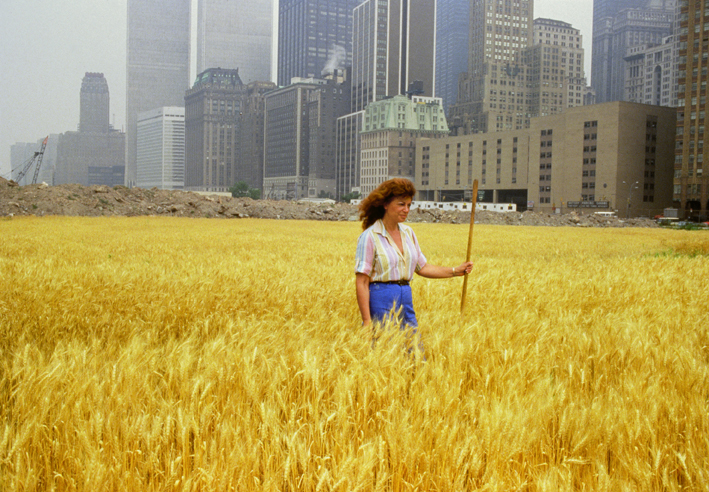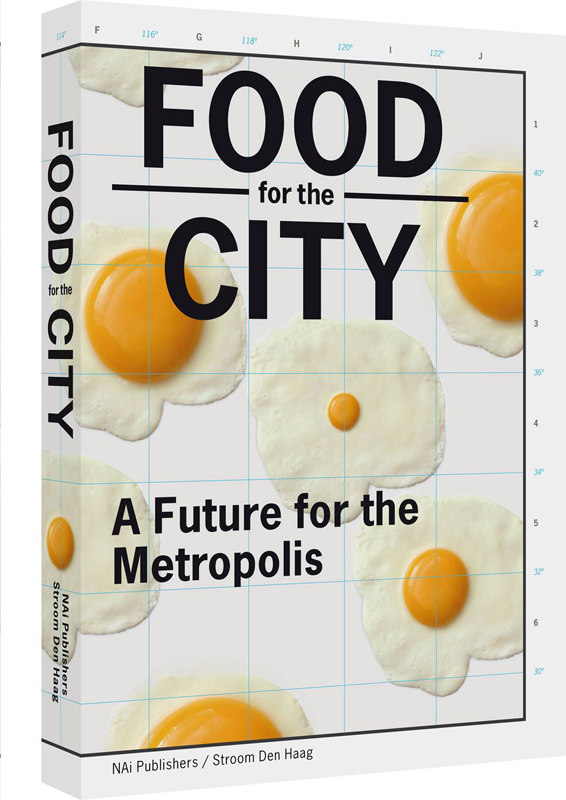Book – Food for the City
No easy task to feed a million people who generally do not contribute a single carrot, nor potato, salad, nor tomato, nor wheat, nor anything to their own daily need. Every single aspect of food has to be provided through specialists trading for something. The specialisation has gone this far as to that there is no way any of the structures would survive without the others and supplying food is one of the fundamental aspects of forming densely inhabited settlements.
Image taken from stroom / Wheatfield – A Confrontation by the American artist Agnes Denes, 1982 in the middle of New York.
Its nothing new, this has been an aspect of settlements and cities for as long as they exist, however with site and degree of specialisation of its inhabitants the task has become more complex. Today we are as far detached from the food we eat as to not knowing where it comes from or how it is produced. We are the generation for whom everything simply comes from the supermarket shelf as if it would grow there. The rest of the supply chain and especially the origin of products as simple as apple, bread or milk is a mystery. Do potatoes grow on bushes, is milk a product of vegetables and monkey nuts are roots?
In a recent NAi Publishers / Stroom Den Haag publication Food for the City: A Future for the Metropolis this topic of the food supply chain and the various connected aspect in regards not the city are discussed. In 13 show essays a range of views from food production to food delivery to food processing and food consumption are in detail presented. The core element is a continuous photo essay documenting and illustrating the topic in a wider context.
Food has become part of the wider discussion surrounding cities in the wake of environmental consciousness and the push for sustainability. It has become clear that even though the food supply chain has disappeared from the daily business of the individual citizen it is a major task requiring a lot of resources. From the production, to transportation, to storage, to recycling food requires energy. On the other hand the modern food chain poses high risks and requires a level of security.
Image taken from foodprint / Michiko Nitta en Michael Burton, Algaculture, early works.
The essays in the publication, most of which focus on a specific aspic or case study imply wider application to other situations and a such can be read in combination or in multiple contexts. With this the publication is seeking to cover the topic more widely. There is the Industrialist proposing a new paradigm for 2050 to feed the world, the chef finds answers in the rubble of Haiti, the farmer writes on how to think out of the box, the technologist of course solves the problem of food production and the architect discusses the food network in arctic communities.
Whilst the topics are very interesting and definitely timely the essays each are very short and only really give an overview of the topic. Little goes deep and brings up questions or proposals that would affect the reader as individual. A bit disappointing really is how the title of the publication is misleading the reader to believe the publication is on cities. The is little to no taking about urban structures beyond the broader assumption as that if in 2050 75% of the worlds population lives in urban areas any talking about food is talking about cities.
Nevertheless the topic is very uptodate and something that has been neglected by the broader discussion for a while. The basic food supply definitely is and poses a range of problem in many ways for the metropolis and will even more so in the future. The problems are not only production, as the publication points out if the population grows at this rate by 2050 a number of additional planets would be necessary to produce the required amount of food, but also there are sustainability problems health problems and cultural problems emerging. The discussion is launched.
Image taken from Wietske Maas / Book cover Food for the City: A Future for the Metropolis.
van der Sande, B. ed., 2012. Food for the City – A Future for the Metropolis, Rotterdam: NAI Publishers.


